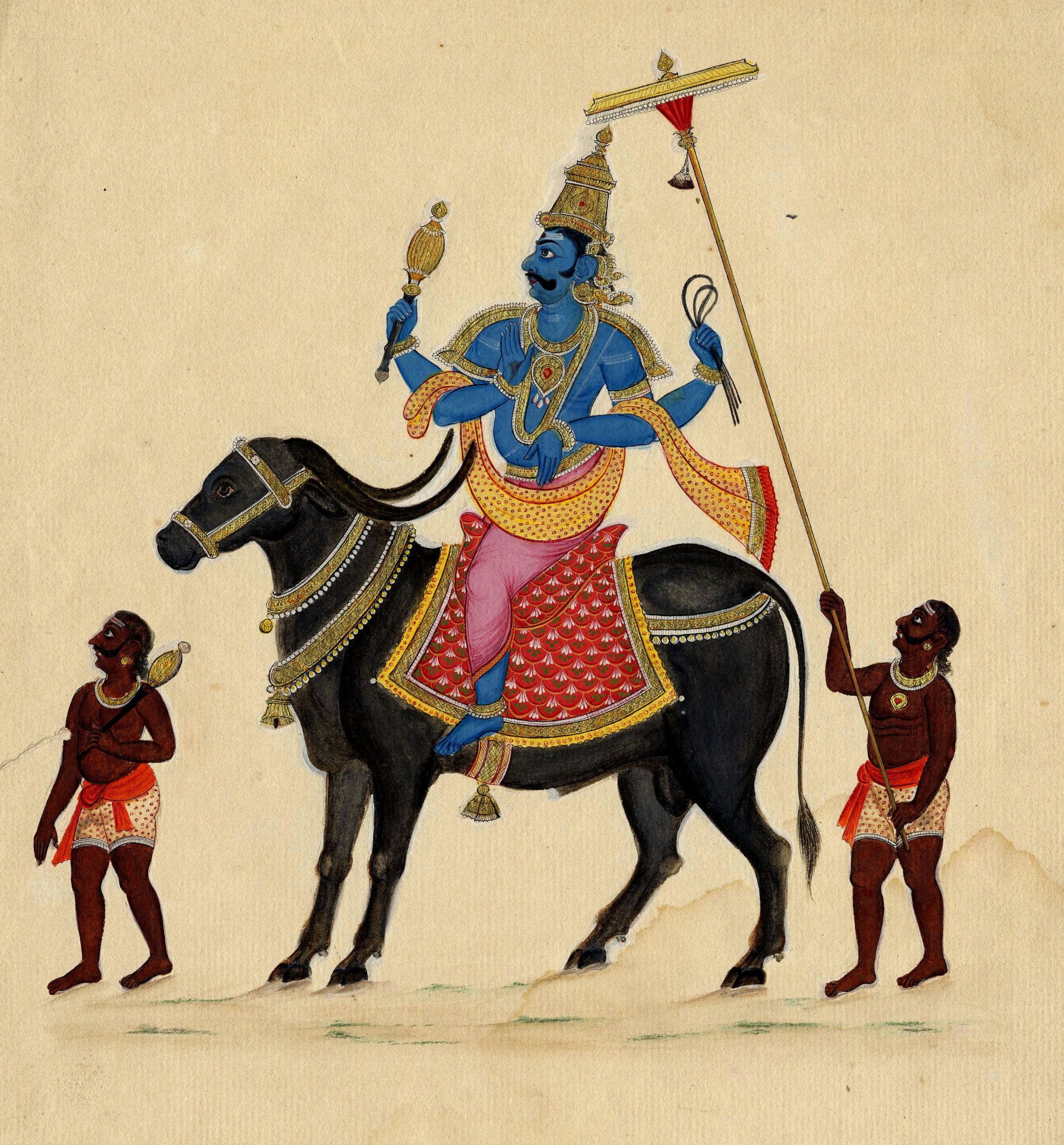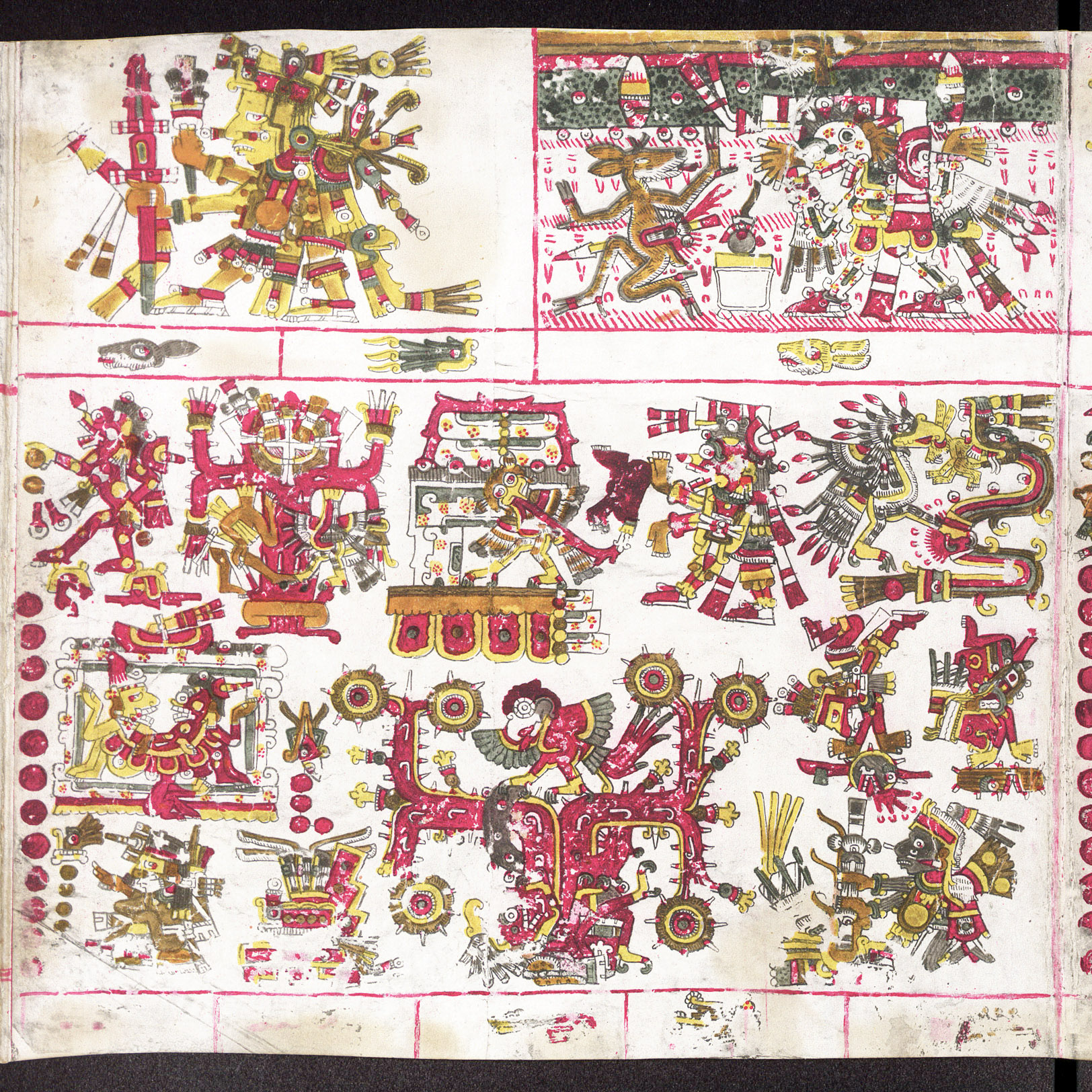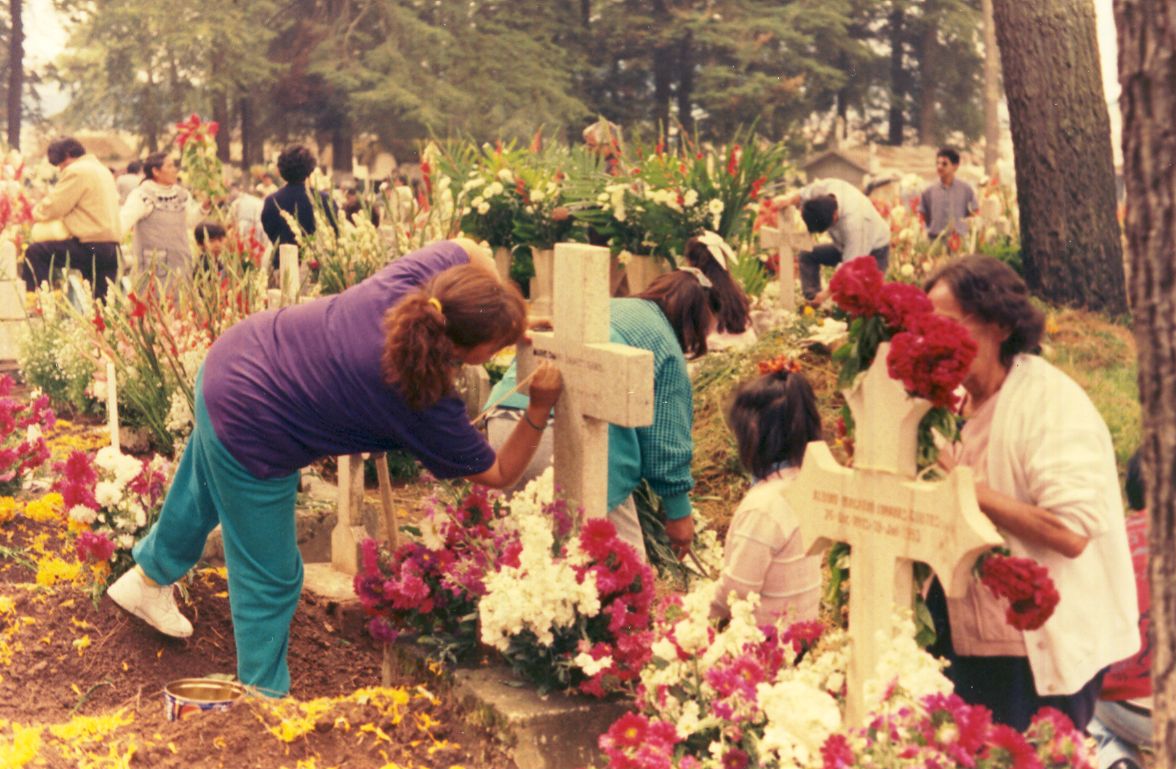|
Mictēcacihuātl
Mictēcacihuātl (, meaning "Lady of the Dead"), in Aztec mythology, is a death deity and consort of Mictlāntēcutli, god of the dead and ruler of Mictlān, the lowest level of the underworld. Her role is to watch over the bones of the dead and preside over the ancient festivals of the dead. These festivals evolved from Aztec traditions into the modern Day of the Dead after synthesis with Spanish traditions. She now presides over the contemporary festival as well. She is known as the "Lady of the Dead", since it is believed that she was born, then sacrificed as an infant. Mictēcacihuātl was represented with a flayed body and with jaw agape to swallow the stars during the day.Fernández 1992, 1996, p. 142. In popular culture *Mictēcacihuātl is a major character in ''Onyx Equinox''. *Under the name "Lady Micte", Mictēcacihuātl is a supporting character in ''Maya and the Three''. See also * Santa Muerte ''Nuestra Señora de la Santa Muerte'' (; Spanish for Our Lady of Holy ... [...More Info...] [...Related Items...] OR: [Wikipedia] [Google] [Baidu] |
Santa Muerte
''Nuestra Señora de la Santa Muerte'' (; Spanish for Our Lady of Holy Death), often shortened to Santa Muerte, is a cult image, female deity, and folk saint in folk Catholicism and Religion in Mexico, Mexican Modern Paganism, Neopaganism. A personification of death, she is associated with healing, protection, and safe delivery to the afterlife by her devotees. Despite condemnation by leaders of the Catholic Church, and more recently Evangelicalism, evangelical movements, her Cult (religious practice), following has become increasingly prominent since the turn of the 21st century. Originally appearing as a male figure, Santa Muerte now generally appears as a skeletal female figure, clad in a long robe and holding one or more objects, usually a scythe and a globe. Her robe can be of any color, as more specific images of the figure vary widely from devotee to devotee and according to the rite being performed or the petition being made. The following of Santa Muerte began in Mexico ... [...More Info...] [...Related Items...] OR: [Wikipedia] [Google] [Baidu] |
List Of Death Deities
Many have incorporated a god of death into their mythology or religion. As death, along with birth, is among the major parts of human life, these deities may often be one of the most important deities of a religion. In some religions in which a single powerful deity is the object of worship, the death deity is an antagonist against whom the primary deity struggles. The related term death worship has most often been used as a derogatory term to accuse certain groups of morally abhorrent practices which set no value on human life. In monotheistic religions, death is commonly personified by an angel or demon instead of a deity. Occurrence In polytheistic religions which have a complex system of deities governing various natural phenomena and aspects of human life, it is common to have a deity who is assigned the function of presiding over death. This deity may actually take the life of humans or, more commonly, simply rule over the afterlife in that particular belief system (a sin ... [...More Info...] [...Related Items...] OR: [Wikipedia] [Google] [Baidu] |
Mictlāntēcutli
Mictlāntēcutli () or Mictlantecuhtli (, meaning "Lord of Mictlan"), in Aztec mythology, is a god of the dead and the king of Mictlan (Chicunauhmictlan), the lowest and northernmost section of the underworld. He is one of the principal gods of the Aztecs and is the most prominent of several gods and goddesses of death and the underworld. The worship of Mictlantecuhtli sometimes involved ritual cannibalism, with human flesh being consumed in and around the temple. Other names given to Mictlantecuhtli include Ixpuztec (“Broken Face”), Nextepehua (“Scatterer of Ashes”), and Tzontemoc (“He Who Lowers His Head”). Two life-size clay statues of Mictlantecuhtli were found marking the entrances to the House of Eagles to the north of the Great Temple of Tenochtitlan. Attributes Mictlantecuhtli was considered tall and was depicted as a blood-spattered skeleton or a person wearing a toothy skull.Miller & Taube 1993, 2003, p.113. Although his head was typically a skull, h ... [...More Info...] [...Related Items...] OR: [Wikipedia] [Google] [Baidu] |
Maya And The Three
''Maya and the Three'' (Spanish title: ''Maya y los tres'') is a computer-animated fantasy streaming television miniseries created by Jorge R. Gutiérrez and produced by Tangent Animation. The nine-episode series premiered on Netflix on October 22, 2021. Premise Set in a world based on pre-colonial Mesoamerica and other indigenous cultures, Maya, a warrior princess, is celebrating her fifteenth birthday, but when the underworld gods appear and announce she must pay for her family's misdeeds, everything changes. If she refuses to go along, the world itself will be ravaged by the gods, so she embarks on a quest to fulfill a prophecy that says that three warriors will appear who will help her defeat these gods and save humanity itself from destruction. Voice cast * Zoe Saldaña as Princess Maya * Gabriel Iglesias as Picchu * Diego Luna as Zatz, the Prince of Bats * Gael García Bernal as Lance, Dagger, and Shield, the Jaguar Brothers, Maya’s older triplet half-brothers * R ... [...More Info...] [...Related Items...] OR: [Wikipedia] [Google] [Baidu] |
Aztec Mythology
Aztec mythology is the body or collection of myths of the Aztec civilization of Central Mexico. The Aztecs were Nahuatl-speaking groups living in central Mexico and much of their mythology is similar to that of other Mesoamerican cultures. According to legend, the various groups who were to become the Aztecs arrived from the north into the Anahuac valley around Lake Texcoco. The location of this valley and lake of destination is clear – it is the heart of modern Mexico City – but little can be known with certainty about the origin of the Aztec. There are different accounts of their origin. In the myth the ancestors of the Mexica/Aztec came from a place in the north called Aztlan, the last of seven ''nahuatlacas'' (Nahuatl-speaking tribes, from ''tlaca'', "man") to make the journey southward, hence their name "Azteca." Other accounts cite their origin in Chicomoztoc, "the place of the seven caves," or at Tamoanchan (the legendary origin of all civilizations). The Mexic ... [...More Info...] [...Related Items...] OR: [Wikipedia] [Google] [Baidu] |
Mictlān
Mictlan () is the underworld of Aztec mythology. Most people who die would travel to Mictlan, although other possibilities exist. (see " Other destinations", below). Mictlan consists of nine distinct levels. The journey from the first level to the ninth is difficult and takes four years, but the dead are aided by the psychopomp, Xolotl. The dead must pass many challenges, such as crossing a mountain range where the mountains crash into each other, a field with wind that blows flesh-scraping knives, and a river of blood with fearsome jaguars. Mictlan also features in the Aztec creation myth. Mictlantecuhtli set a pit to trap Quetzalcoatl. When Quetzalcoatl entered Mictlan seeking bones with which to create humans, Mictlantecuhtli was waiting. He asked Quetzalcoatl to travel around Mictlan four times blowing a conch shell with no holes. Quetzalcoatl eventually put some bees in the conch shell to make sound. Fooled, Mictlantecuhtli showed Quetzalcoatl to the bones. But Quetzalcoa ... [...More Info...] [...Related Items...] OR: [Wikipedia] [Google] [Baidu] |
Underworld
The underworld, also known as the netherworld or hell, is the supernatural world of the dead in various religious traditions and myths, located below the world of the living. Chthonic is the technical adjective for things of the underworld. The concept of an underworld is found in almost every civilization and "may be as old as humanity itself". Common features of underworld myths are accounts of living people making journeys to the underworld, often for some heroic purpose. Other myths reinforce traditions that entrance of souls to the underworld requires a proper observation of ceremony, such as the ancient Greek story of the recently dead Patroclus haunting Achilles until his body could be properly buried for this purpose. Persons having social status were dressed and equipped in order to better navigate the underworld. A number of mythologies incorporate the concept of the soul of the deceased making its own journey to the underworld, with the dead needing to be taken a ... [...More Info...] [...Related Items...] OR: [Wikipedia] [Google] [Baidu] |
Aztec
The Aztecs () were a Mesoamerican culture that flourished in central Mexico in the post-classic period from 1300 to 1521. The Aztec people included different Indigenous peoples of Mexico, ethnic groups of central Mexico, particularly those groups who spoke the Nahuatl, Nahuatl language and who dominated large parts of Mesoamerica from the 14th to the 16th centuries. Aztec culture was organized into city-states (''altepetl''), some of which joined to form alliances, political confederations, or empires. The Aztec Empire was a confederation of three city-states established in 1427: Tenochtitlan, city-state of the Mexica or Tenochca; Texcoco (altepetl), Texcoco; and Tlacopan, previously part of the Tepanec empire, whose dominant power was Azcapotzalco (altepetl), Azcapotzalco. Although the term Aztecs is often narrowly restricted to the Mexica of Tenochtitlan, it is also broadly used to refer to Nahuas, Nahua polities or peoples of central Pre-Columbian Mexico, Mexico in the preh ... [...More Info...] [...Related Items...] OR: [Wikipedia] [Google] [Baidu] |
Day Of The Dead
The Day of the Dead ( es, Día de Muertos or ''Día de los Muertos'') is a holiday traditionally celebrated on November 1 and 2, though other days, such as October 31 or November 6, may be included depending on the locality. It is widely observed in Mexico, where it largely developed, and is also observed in other places, especially by people of Mexican heritage. Although related to the simultaneous Christian remembrances for Hallowtide, it has a much less solemn tone and is portrayed as a holiday of joyful celebration rather than mourning. The multi-day holiday involves family and friends gathering to pay respects and to remember friends and family members who have died. These celebrations can take a humorous tone, as celebrants remember funny events and anecdotes about the departed. Traditions connected with the holiday include honoring the deceased using calaveras and marigold flowers known as ''cempazúchitl'', building home altars called '' ofrendas'' with the favorite fo ... [...More Info...] [...Related Items...] OR: [Wikipedia] [Google] [Baidu] |
Flaying
Flaying, also known colloquially as skinning, is a method of slow and painful execution in which skin is removed from the body. Generally, an attempt is made to keep the removed portion of skin intact. Scope A dead animal may be flayed when preparing it to be used as human food, or for its hide or fur. This is more commonly called skinning. Flaying of humans is used as a method of torture or execution, depending on how much of the skin is removed. This is often referred to as flaying alive. There are also records of people flayed after death, generally as a means of debasing the corpse of a prominent enemy or criminal, sometimes related to religious beliefs (e.g. to deny an afterlife); sometimes the skin is used, again for deterrence, esoteric/ritualistic purposes, etc. (e.g. scalping). Causes of death Dermatologist Ernst G. Jung notes that the typical causes of death due to flaying are shock, critical loss of blood or other body fluids, hypothermia, or infections, and that th ... [...More Info...] [...Related Items...] OR: [Wikipedia] [Google] [Baidu] |
Onyx Equinox
''Onyx Equinox'' is a Mexican-American adult animated streaming television series created by Sofia Alexander for Crunchyroll. It is based on the mythologies of Mesoamerica, featuring deities of Aztec, Maya and Zapotec myth, while also making references to the Olmecs. The series premiered on November 21, 2020. Alexander said that she hoped that fans of Western animation would "see the appeal of action-drama animation for adults." While Alexander was initially nervous about pitching the show due to the lack of "stories about Mesoamerica," a Crunchyroll executive, Marisa Balkus, loved the pitch, and the show became "the first original series to be produced entirely out of Crunchyroll Studios." Synopsis The Mexican god of the underworld, Mictlantecuhtli, has begun stealing blood sacrifices from the other gods, culminating in a Zapotec city being leveled. To these ends, Quetzalcoatl decides to close the gates to the underworld, but can't due to said gates being made of obsidian, whi ... [...More Info...] [...Related Items...] OR: [Wikipedia] [Google] [Baidu] |







